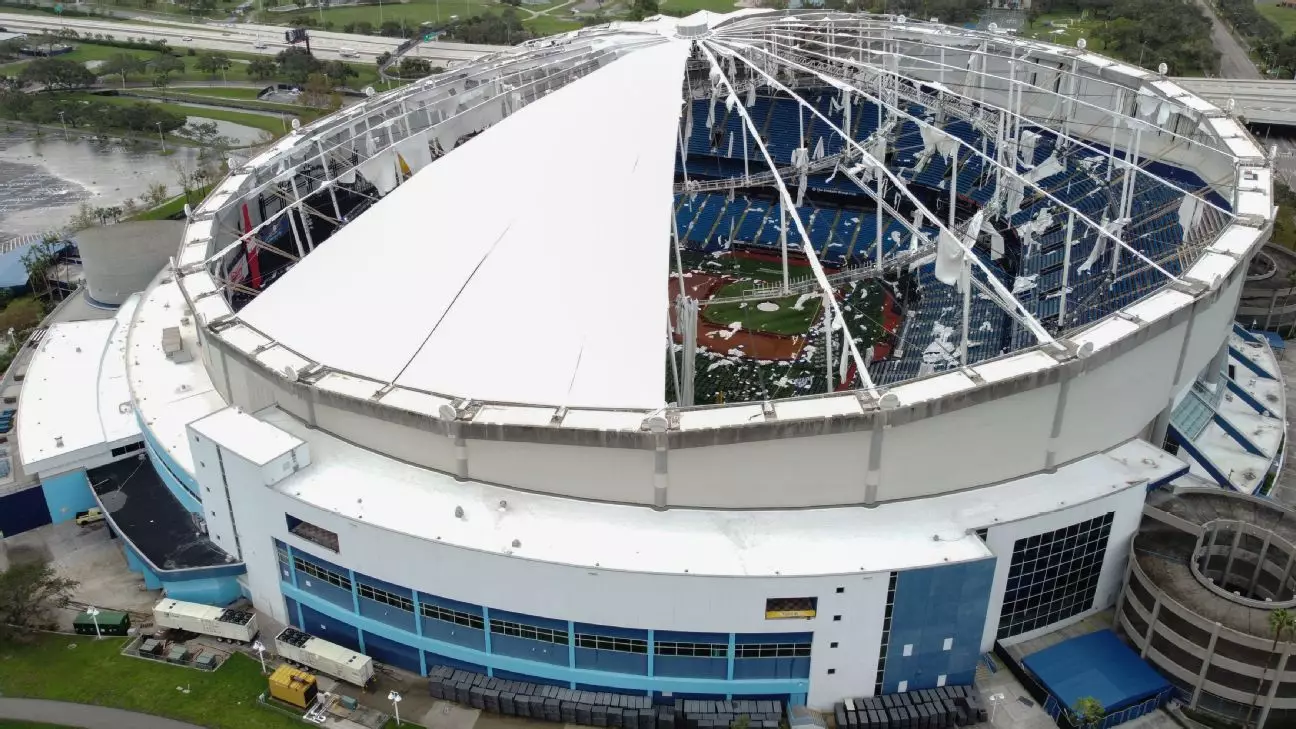In a decisive move reflecting accountability and foresight, the St. Petersburg City Council has approved a substantial allocation of $22.5 million dedicated to repairing the beleaguered Tropicana Field. This funding comes in the wake of Hurricane Milton’s destructive forces, which necessitated immediate action to restore the stadium. Scheduled for completion in time for the 2026 baseball season, the initial focus will be on installing a new membrane roof, a critical step before embarking on a broader scope of repairs.
The urgency of these repairs cannot be overstated; the storms have torn through the fabric of local sports culture, compelling the Tampa Bay Rays to temporarily relocate their home games to Steinbrenner Field in Tampa. While this notable shift might have reignited fan enthusiasm at a different venue, the long-term implications for the Rays and the city hang in the balance, shrouded in uncertainty.
Financial Responsibilities and the Ray’s Future
St. Petersburg’s commitment to fix the Tropicana Field is, at its core, a matter of legal obligation. Council member Lissett Hanewicz, who also serves as an attorney, has articulated the unwavering necessity to adhere to the agreement, emphasizing, “We are legally bound by an agreement.” While fulfilling these requirements seems straightforward, the notion that these reparative actions could potentially be a double-edged sword looms large. Should the Rays reinstate their commitment to this aging facility, local sports fans might find cause for celebration. However, the nagging doubt lingers that the team may seek greener pastures elsewhere, whether that be in Tampa or another city entirely.
Even though Major League Baseball has prioritized retaining teams within active markets, the Rays must navigate treacherous waters. With a looming commitment to play at the Trop until 2028 (depending on successful repairs), baseball enthusiasts and city officials alike must grapple with these uncertainties. The Rays have been a fixture in the community since their inception in 1998, and losing them would sever a vital connection to their sports heritage.
Complexities of Repair Work and Broader Implications
The daunting task ahead is not restricted solely to the roof; city architect Raul Quintana estimates the total cost for repairs could escalate to $56 million. This figure encompasses everything from updating the playing surface and technology systems to enhancing the overall fan experience through improved concessions and facilities. With such a large-scale renovation project at hand, the complexities involved are manifold, and there is an inherent risk that these repairs may not simply rejuvenate the stadium but demand a re-examination of its role within the community.
Moreover, adapting materials sourced globally presents its own challenges. Assemblies from Germany and China skyrocket the question of tariffs and their potential impact on costs. In a world grappling with supply chain vulnerabilities, the financial implications could ripple through the project, raising concerns about budget overruns that could lead to further complications down the line.
Community Sentiment and Future Prospects
While some council members, such as Brandi Gabbard, express ambivalence over the expenditure—arguing a preference toward hurricane recovery efforts for residential neighborhoods—the act of investing in Tropicana Field also serves as a refuge for hope within the broader community. This restoration effort embodies a deeper significance, especially in the wake of a devastating hurricane that tested the region’s mettle. The potential revival of Tropicana Field reinforces the idea of resilience, a vital tenet for both the city and its inhabitants.
However, the question remains: Can a structure synonymous with mixed success still thrive in today’s ever-evolving sporting landscape? While the Rays have enjoyed sporadic bursts of success, the fan experience at the Trop has faced criticism over the years, especially when compared to other modern venues. The real challenge lies not merely in physical repairs but in rekindling a vibrant fan culture to ensure that Tropicana Field emerges not as a relic of the past, but as a harbinger of exciting crossroad possibilities for the future.


Leave a Reply